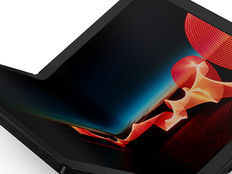5 Obscure (but Effective) Ways to Maximize Notebook Battery Life
There are few frustrations as great as opening a notebook computer during a busy day to finally get some work done, only to discover the battery is critically low. While everyone should keep a power cord on hand, one never seems to be available when you need it.
The truth is most users rely on battery power more often than they plan, and these are the times that effective conservation can define the outcome of the day. While the best ways to save power might seem obvious (adjusting sleep time and dimming screen brightness are a couple favorites), many lesser-known strategies warrant equal consideration.
1. Avoid Aimless Antennas
Many notebooks at the very least support Bluetooth and Wi-Fi, both of which are invaluable technologies. However, if you aren’t currently using one or both of these services, turn them off; not only does leaving them on put an unnecessary strain on a notebook’s battery, but having the computer accessible by the general public poses an unwanted security risk. Bluetooth services can be turned off using software, while most popular notebooks have a physical radio switch that makes toggling Wi-Fi more convenient.
2. Don’t Just Sleep, Hibernate
While “sleep” or “suspend” puts a notebook into a low-power mode, it is still using power the entire time it is asleep. Worse yet, if the unit sleeps long enough, the battery will run out completely, shutting the computer off without saving any of the user’s data. Instead, configure the workstation to hibernate. Hibernation puts the device into a suspended state, which requires power to maintain; writes the contents of the system memory to the local hard drive; and then powers off the notebook completely. The disadvantage is that it takes longer to go in and out of hibernation versus sleep. But all told, this time difference is negligible, and there is a much better chance data will remain intact.
3. Audit Automatic Updates
While running the latest-and-greatest version of everything is widely accepted as a good thing, the truth is that many programs that compulsively check for updates do not need to do so. While it is certainly a good idea to keep a computer’s operating system, office suite, PDF software and media-centric programs, such as Flash and Java, current, allowing every Tom, Dick and Harry hardware utility to check for and install updates automatically is an equally bad idea. Unnecessary updating will do little more than slow system startup, waste network bandwidth and shorten battery life — all while introducing untested software (and potential problems) into your operating environment. Generally speaking, software updates for hardware devices like these should be completed only when they are needed, not simply because they are available.
4. Omit the Optical
While CD and DVD-ROM drives are occasionally necessary to install software or watch a movie, in most day-to-day scenarios, they do little more than add weight to a notebook while needlessly consuming energy. Whether it’s “spin-up” on boot or initializing and indexing contents every time an Explorer window opens, the power required takes an unnecessary toll on battery life. Many modern drives support power management and can be set to shut down on idle. At the very least, set this to a low tolerance. If the drive does not support power management, consider removing it altogether and replacing it with the travel bezel that commonly ships with many notebooks.
5. Slay the Vampire Programs
Extra clock cycles may seem incidental in the realm of extending battery life, but they add up quickly, and a microprocessor that runs at 200 degrees will use a lot more energy than one running at 100 degrees. Ease excess burden on a machine’s battery by getting rid of unnecessary programs that run in the background. Limiting the aforementioned “updaters” is a great start, but also be aware that many programs register “quick start” utilities that launch on Windows startup and run even when the parent application isn’t. Disable these programs with extreme prejudice.
Turning off unnecessary system services is always a good idea, as well. All of a computer’s running services can be discovered with just a few mouse clicks; primers on this topic abound on the Internet. When a service simply isn’t needed, change the “startup type” to “manual” instead of “automatic.”







